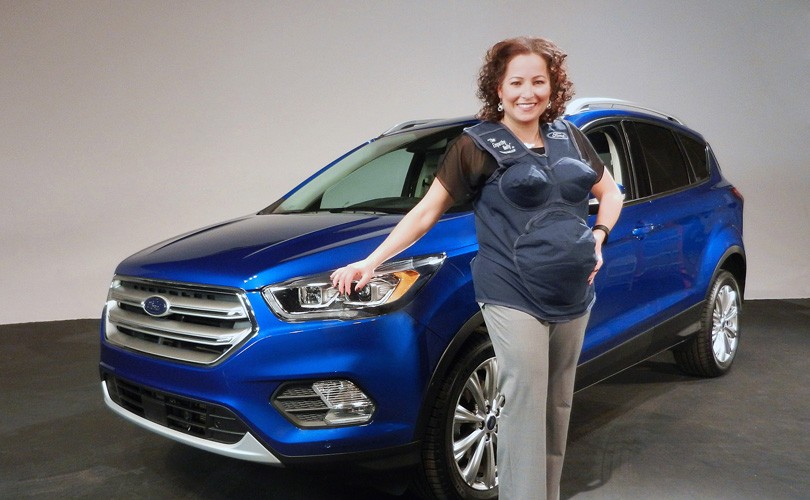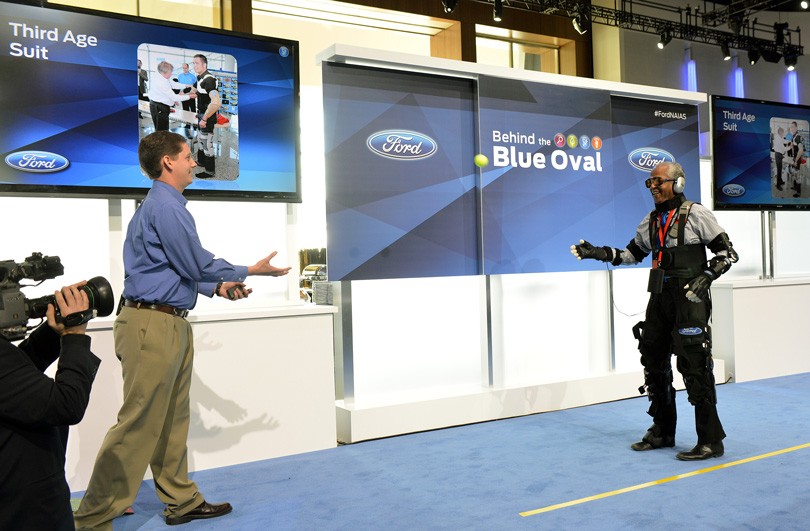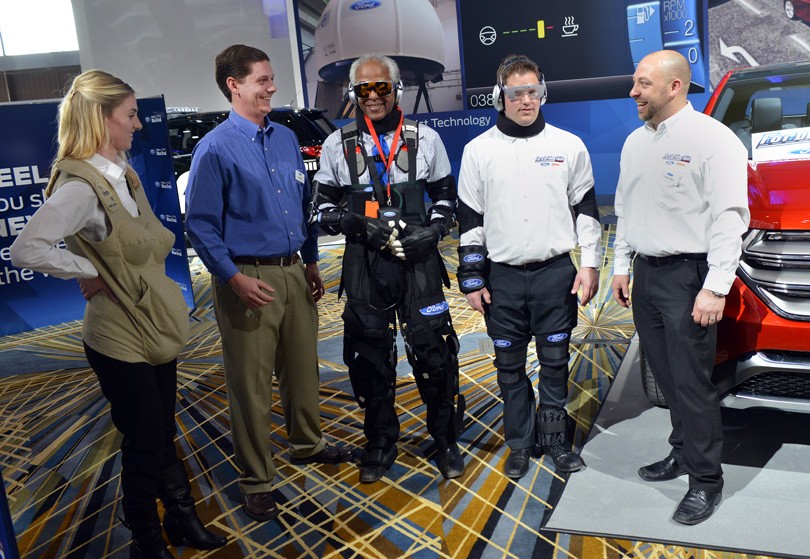How Ford Uses An ‘Empathy Belly’ to Improve Its Employees' Soft Skills
Every quarter of every year, a batch of new engineer hires at Ford Motor Co. discover that their first tasks are to learn what it’s like being an expectant mother and an elderly person.
Strapped into weighted suits, auto engineers are instructed to get into a car, put on their seatbelt, adjust their mirrors, turn on audio controls, change the radio and experience all the challenges and physical limitations that pregnant and elderly drivers do on a regular basis.
Why go through all this? Because Ford has realized the best way for them (and any business) to truly understand how customers interact with their products is to empathize with them. In fact, there’s a direct link between an empathizing workforce and corporate success.
The problem is, empathy is hard to learn, difficult to teach and is part of the ever-widening soft skills gap that’s been slowly developing for decades. However, enlightened companies, like Ford are coming up with creative ways to bridge this gap.
A closer look at Ford’s empathy training
To show engineer’s what it’s like to be pregnant, Ford’s “empathy belly” suit adds about 30 pounds and includes features that impede mobility and comfort, like a compression belt to restrict the lungs, weight and water bags to simulate a fetus’ head pushing on the bladder and lead balls simulating fetus limbs.
Then there’s the "Third Age Suit," which hints at the needs of the elderly through impairment glasses to demonstrate eye diseases, acoustic earmuffs to mimic hard of hearing, and bandages and braces, weighing all about 22 pounds, to restrict movement.
The difference empathy training has made at Ford
Katie Allanson, an ergonomics specialist who leads Ford’s new hire trainings, says that the company’s features—everything from doors, seat belts, even buttons—have improved in the last decade since the first weighted garments were used because engineers are now able to “empathize with their customers.”
“That is a direct result of our engineers thinking about universal design, having that awareness of different populations, different age groups, different users, and thinking about that when they’re designing features,” says Allanson.
Other ways to improve soft skills and what it means for recruiters
Aside from empathy trainings, like the one at Ford, companies can forge similar soft skills by making sure to hire for diversity. Compared to other industries, tech has had particularly slow progress when it comes to hiring for diversity and inclusion. For recruiters, not only is it essential to ask the right questions for identifying candidates with the necessary soft skills, it’s also vital to hire for diversity. There would be empathic thinking all around if a larger mix of diversity existed on a regular basis.
But like all good things, hiring for diversity takes more time, more effort and a non-traditional approach, which may include, as Lou Adler writes, redefining work, how you write job descriptions and expanding diversity referral programs. Take a good, hard look at your current hiring process, identify its flaws and biases and think about ways to attract the empathetic, diverse leaders you want.
Additionally, think about questions you can ask during the interview to test for empathy that can reveal how the candidate thinks, their process to finding solutions, awareness of potential risks and ability to effectively communicate ideas.
Final thoughts
Unlike the “good ol’ days” when getting the job done was enough to earn you a competitive edge, businesses today need to go above and beyond, be able to see a glimpse of the world to come, prepare for blind spots and veer when necessary to stay in the races.
For companies, that means hiring candidates with the required “hard” skills to get the job done and the necessary soft skills, or the ability to think differently, think ahead and inspire bigger thinking. Armed with soft skills, sometimes called “human” skills, talent can think critically about the future, solve problems with innovative solutions, collaborate effectively, and have the emotional intelligence to connect with others.
To receive blog posts like this one straight in your inbox, subscribe to the blog newsletter.
Topics: Soft skills
Related articles







